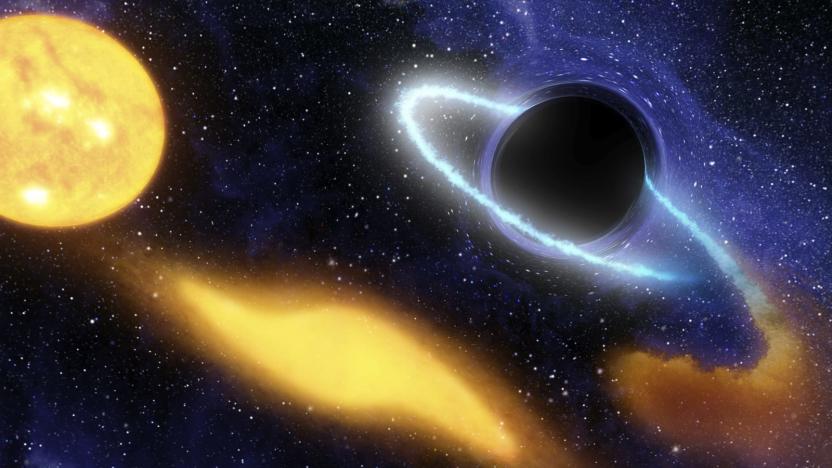gravitationalmicrolensing
Latest

Black hole detection is becoming much easier
It's still relatively difficult to spot black holes (after all, they trap light), but it may be relatively commonplace in the near future. An international team of researchers has developed a detection technique that should identify a more frequent 10 black holes per year. By using radio telescopes to capture multiple snapshots of gravitational microlensing events (where objects like black holes bend light), you can obtain details like distance, mass and velocity for subjects you can't easily study using visible light.

First alien moon possibly spotted 1,800 light years away
Exoplanets are seemingly easy to find these days, but their moons have been all too elusive -- at least, until now. Researchers at the University of Notre Dame claim to have spotted what may be the first exomoon. By looking for gravitational effects on starlight, they've found a relatively small, planet-like object orbiting a much larger object that isn't a regular star. Don't be quick to reach any conclusions, however. The two astral bodies are too far away from anything else in space to have an obvious explanation; while we may be looking at an orbitless planet and its moon, both about 1,800 light years away, the pair could also represent a failed star and an ordinary planet. Even if the objects remain mysteries, though, the techniques used in their discovery should help astronomers locating exomoons in the future. [Image credit: NASA/JPL-Caltech]
